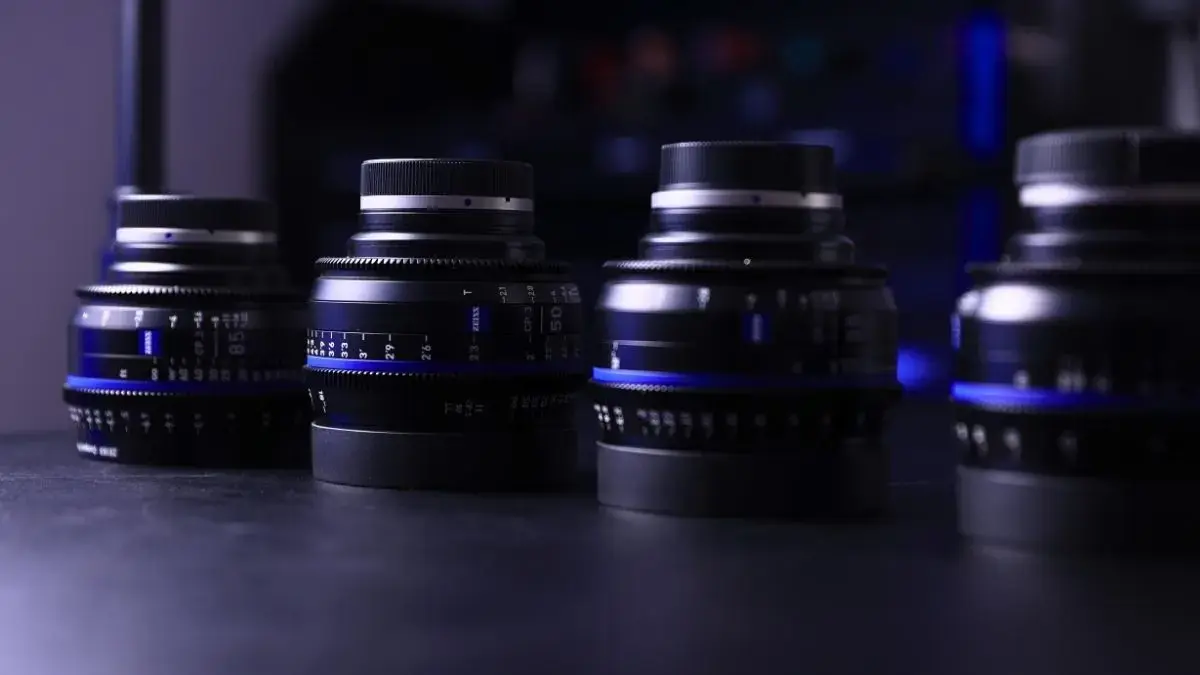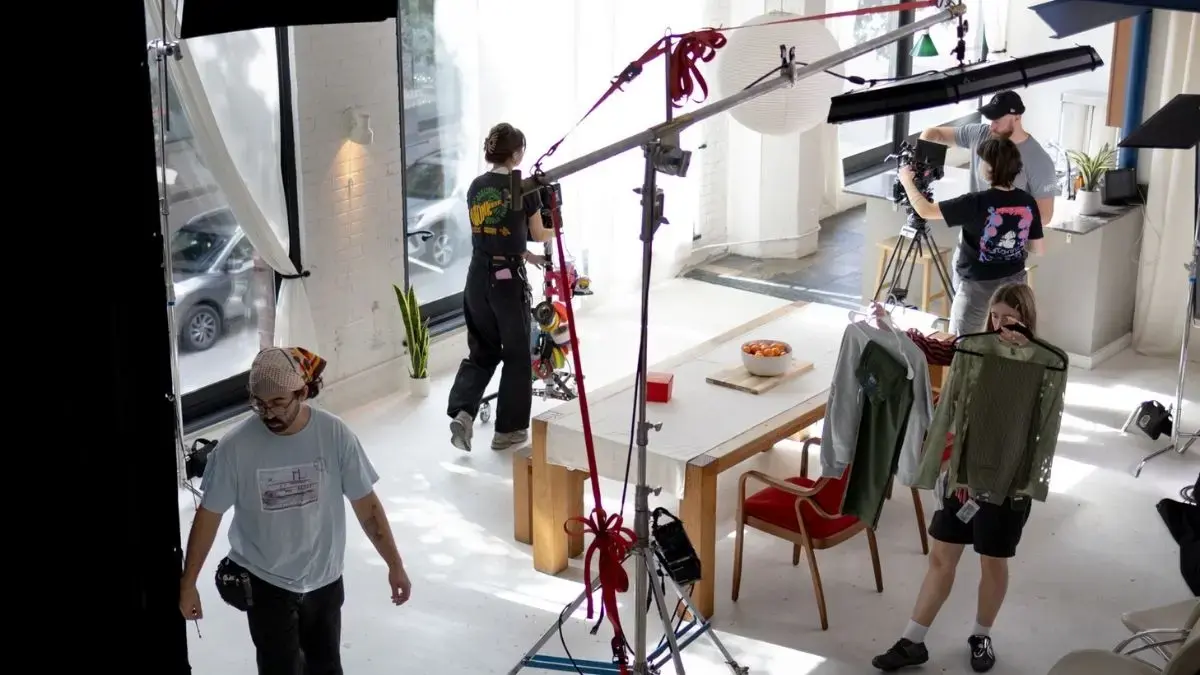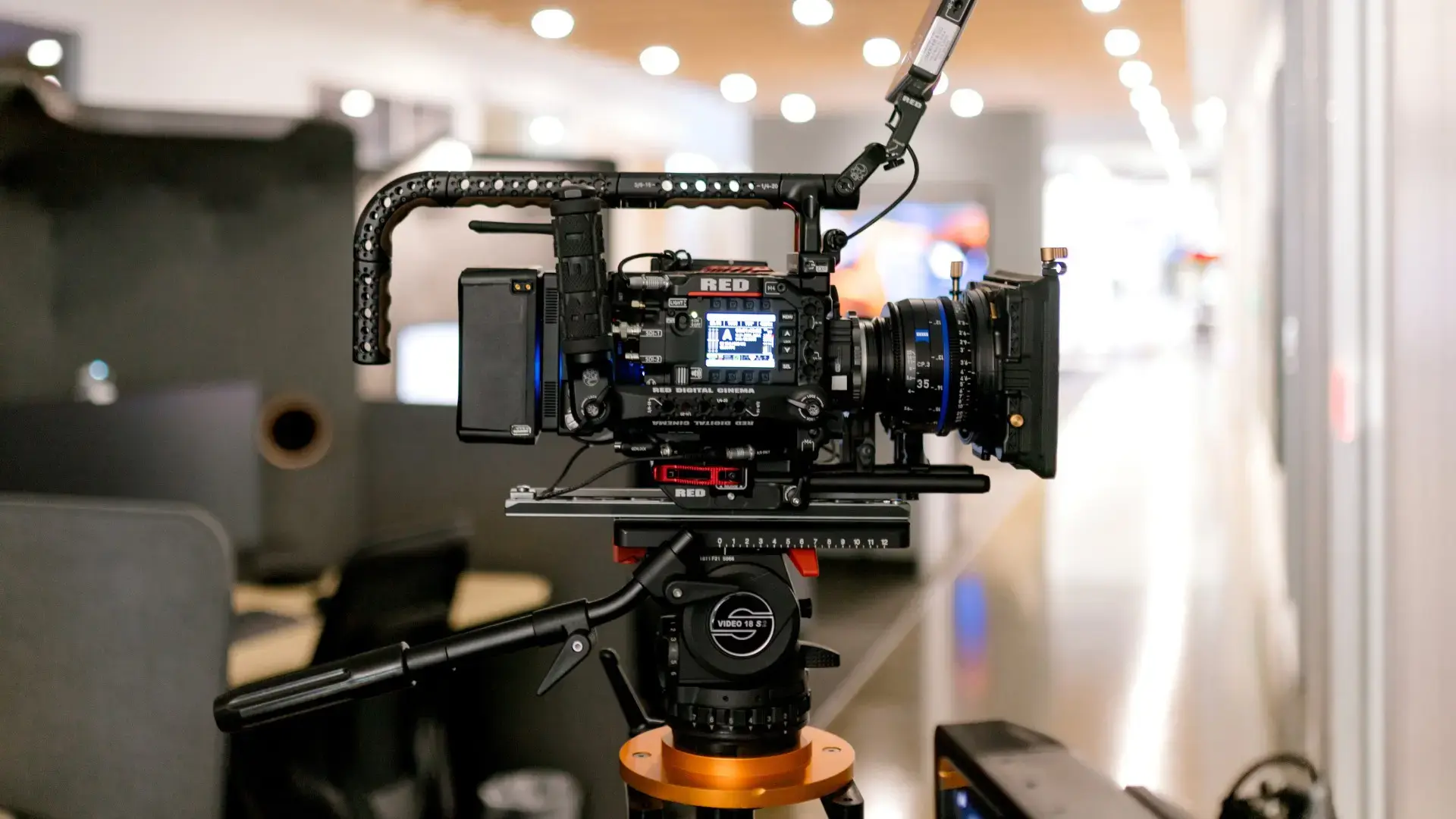Corporate vs. Small Business Video Production in Chicago
With close to 10 million residents, the Chicago area has an expansive population of potential customers and clients for your business. Video content...
▶ Video Strategy & Discovery
A video marketing strategy will keep your production cohesive and on schedule.
▶ Creative Treatments, Scripts & Storyboards
Bring your vision to life with professional scriptwriting and storyboarding services.
▶ Production Preparation
Prepare for your corporate video with professional video production services.
▶ Full Service Filming Days
Discover how Charter & Co can help you bring your vision to life through expert on-set filming services.
▶ Video Editing, Color Grading & Sound Design
Elevate your video marketing with Charter & Co’s expert video editing and post-production services.
▶ Motion Graphics
Captivate audiences with videos, ads, and social media that include high-quality animations.
▶ Licensed Music & Voiceovers
Elevate your videos with high-quality music licensing and voiceover services.
▶ Distribution Strategy & Advertising Support
Get your content noticed with a comprehensive video distribution strategy.
▶ Everything Video Marketing
Video marketing resources: What it is, why it matters, and how to do it.
▶ Everything Video Production
Your ultimate guide to video production resources: Tips and tricks for creating masterful videos.
▶ Blog
Helpful Blog resources for all of your video production and marketing needs.
7 min read
Charter & Co August 26, 2025

Professional video production can significantly amplify your message and your brand, but what is the cost of video production after everything is done? Is the money really worth it for your business goals?
If you're concerned about your project budget, keep in mind that cutting costs doesn't always mean you have to cut quality. Various tools, strategies, and local production teams can help you save money on a cheap video production while maintaining pristine quality and a clear message.
From equipment rentals to crew expenses, various factors can quickly raise your upfront production costs based on your video project's needs. Multiday production shoots with complex, hands-on camera needs will generally cost more than basic, one-day video shoots.
That said, you must also consider the indirect costs. While cheap video production saves you money upfront, your final video may lack the attention-grabbing impact that your brand needs. This could contribute to lower engagement, scalability, and brand visibility while limiting the impact of paid promotions. Comparing your initial production costs to your potential return on investment (ROI) lets you compare your direct and indirect costs of production.
Full-scale video production requires multiple teams and stages to complete, with various elements to budget for. Potential pre-production costs include:
Production costs often include:
Finally, you must plan for post-production and distribution costs, including:
"Cheap video production" doesn't necessarily mean "lower quality," especially if you use cost-effective strategies and tools.
Consider your business's previous video content, such as ads, social media posts, product demos, or raw footage from company events. You can likely repurpose video content as "B-roll" for your future projects, letting you quickly cut away to products, services, and behind-the-scenes content while maintaining viewers' attention.
Beyond previously used videos, you should also consider stock footage. These free or inexpensive videos can significantly enhance your video's final look, whether you want a drone shot of your city or a quick time-lapse.
Try combining multiple video shoots into a single production to avoid spending more time and money shooting each project individually. Of course, you won't be able to do this for every video project, such as for day and night shoots. Still, an experienced production team can recommend easy ways to combine different projects into a single production day without diminishing quality.
Alternatively, think of ways to expand your current video project into multiple videos. For instance, if you're filming a project with two actors, you could write a handful of 30-second scenes that showcase your products and services in different lights. Consider how many nearly identical ads you've seen Flo from Progressive in — yet each ad still works.
While it would be cool to film with an $80,000 camera and a 24-foot crane, this won't be practical for your budget (unless you're anticipating a huge ROI). You can typically lower your equipment costs by simply considering the platforms you want to advertise on. While TV and streaming ads benefit from higher-quality cameras, you can often create excellent-quality social media videos simply with a good iPhone camera.
Various other tools can help you lower your costs beyond basic equipment. Free or cheap video production tools include:
You'll still need the right tools for your average video project, but you can often save money by sticking to the essentials. Take your time researching the most cost-effective tools, whether you're investing in equipment, software, or basic on-set needs.
If you're filming your video project in-house, such as in a small studio, consider the essential equipment and tools you'll need. Depending on how frequently you plan to film, you may be better off renting more expensive equipment, such as cameras and lenses. Still, you'll likely need the following tools:
Microphones
Headphones
Memory cards
Lights
Tripods and stands
"Sandbags" and other weights
Extension cords
Gaffer's tape
Batteries
Video editing software is also essential, whether you plan to edit everything yourself or adjust and reformat videos after working with a post-production professional. The best editing tools and video production platforms depend on your budget and video editing experience.
Consider the following free software options:
DaVinci Resolve: DaVinci Resolve is widely considered an "industry standard" software choice, making it a great free alternative to Adobe Premiere Pro and Final Cut Pro. However, its complex functionality and interface may be challenging to inexperienced video editors.
Adobe Premiere Rush: This toned-down version of Adobe Premiere Pro is much easier to use, with both phone and desktop apps. However, its free starter plan is somewhat limited compared to other types of editing software.
iMovie: This Apple-based software lets you edit basic video clips on your phone or computer. It doesn't offer much beyond basic juxtaposition, but it's very easy to use.
CapCut: This social-media-focused editing app lets you easily juxtapose videos and audio while adding filters, special effects, and other attention-grabbing elements.
While filming everything in-house may be cheaper upfront, it's not necessarily the most cost-effective. Freelance artists and production teams have unique film experiences and skills that can significantly drive up your production value. They know exactly how to frame, light, and color each shot to grab and hold your target audience's attention.
So, while working with freelancers is often more expensive, the higher video production pricing is often worthwhile, based on your specific business goals. Plus, experienced professionals can recommend easy ways to make smart video budget choices, helping you avoid common mistakes and financial setbacks.
Consider your estimated ROI, your distribution platforms, and how long you can feasibly use your video to determine how much you should reasonably spend on video production services. For instance, a streaming ad directly promoting your product will likely have a greater overall value than a one-time social media video wishing followers a Happy Halloween.
Once you've weighed your project value, cost, and ROI, research the video production teams in your area. Understanding your unique needs and resources is the best way to know how to choose a video marketing company. Many professional video production companies, such as Charter & Co, offer flexible rates based on your exact production goals. Check out each team's demo reels, portfolios, and testimonials to see if they meet your project's needs.
A lower video production budget doesn't have to limit its creative potential. In fact, many filmmakers and artists argue that limited resources drive creativity, contributing to more unique and well-refined finished products.
A changing script can unintentionally drive up your pre-production costs, especially if you keep changing your vision. For example, changing a location could cost more money if your team has already scouted, secured permits, and mapped out camera movement in your first location.
The easiest way to save money during this process is to plan ahead. Before crafting the actual script, write down the message you want viewers to take away and brainstorm ways to structure your video around that goal. This can keep the creative process focused on your actual business goals and reduce the risks of rewrites or reshoots later on.
Less is more, which is great when operating on a limited budget. Minimalist backgrounds and sets can help your subject and message stand out by directing viewers' attention wherever you want it to go. For example, consider placing your product in front of an all-black backdrop or using a green screen to create clean, digital surroundings.
Each video production pricing model will benefit your production in different ways, whether you're working with a fixed number or something more flexible.
Production teams and projects operate at one of two potential rates:
Fixed video production rates: These projects cost a predetermined amount, typically estimated based on your initial production plan. While this rate can help you avoid your project going over budget, it can also limit your chances of making changes or revisions as your production continues.
Hourly video production rates: These projects charge you based on the number of hours it takes to complete the project, considering each crew member's time. Most production teams will give you a clear estimate when the project begins, but the final video may cost more or less by the end of the process, especially if you make changes.
Many professional video production companies determine fixed rates based on your project's value, such as its determined ROI. After all, a production team would likely charge much more for a corporation making a Super Bowl ad than for a small, local business making a customer testimonial. Beyond charging lower rates, production teams also consider other ways to lower production costs, such as by using less expensive cameras, minimizing production days, and incorporating stock footage.
Larger crews require your budget to account for extra wages, food, and occasionally transportation for every day of production. The exact numbers depend on the production teams and specific types of crew members you'll need. For instance, an outsourced drone specialist will typically have a higher day rate than a production assistant.
To allocate your video production budget, start by separating costs associated with pre-production, production, and post-production. While production will typically eat up the largest share of your budget, post-production can also cost more if you're relying on VFX and motion graphics.
As you allocate funds to specific departments and costs, reserve about 10% to 15% of your budget for contingency. This way, you'll be prepared for any potential setbacks.
Video production pricing hinges on several factors, such as the number of production days, your camera needs, and music licensing. Basic video productions can cost a few thousand dollars or less, if you already have the right tools. However, large-scale video productions can cost tens of thousands of dollars or more. Estimating your ROI and brand impact can help you figure out which price range best suits your budget.
To create your video production budget, use your estimated ROI to determine a relative price range you'd be comfortable with. From here, allocate funds to pre-production, production, and post-production based on your video goals and needs. Consider all of the types of equipment, crew members, and post-production elements you'll need to avoid any surprises throughout the production process. Then, always leave part of your budget unused for contingency.
Production is typically the most expensive stage of production, often accounting for at least half of your budget. Most of this production budget goes towards your crew, camera, and equipment costs, which you can usually save money on by working with a professional video production team.
While cheap video productions can save you money, your cost savings shouldn't be at the expense of your return on investment. Experienced professionals, such as experts at Charter & Co, can help you creatively bring your ideas to life without going over budget. Get in touch so we can develop a cost-effective production strategy together.

With close to 10 million residents, the Chicago area has an expansive population of potential customers and clients for your business. Video content...

Marketing development funds (MDF) can support various marketing objectives for Microsoft Partners, including campaigns that may not have otherwise...

From short-form social media reels to conference livestreams, corporate video production can significantly amplify your organization's marketing and...